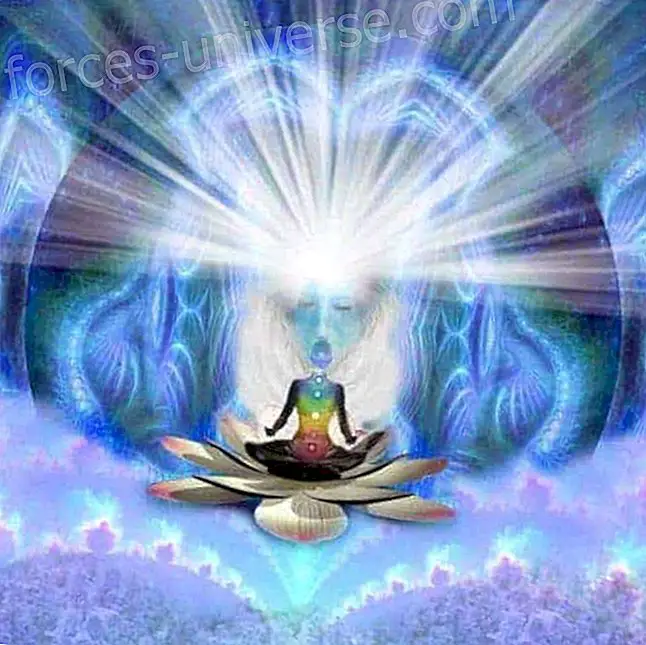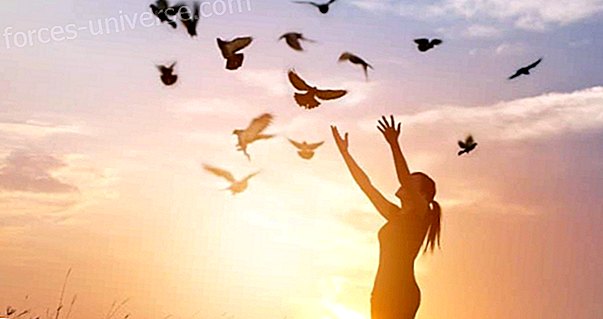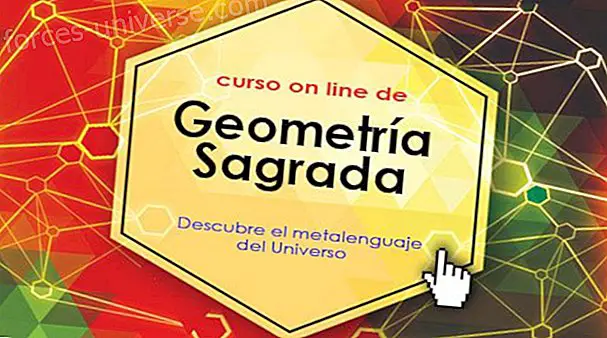
Mayan culture has been one of the most developed on the planet. They inhabited Mesoamerica, territory where Guatemala, Belize, Honduras, El Salvador and a part of Mexico are currently, still survive in several ethnic groups and left great legacies such as the Mayan Nahual Calendar.
In their three millennia of history the Maya spoke dozens of dialects that gave rise to 44 modern Mayan languages that are known today, and built large and impressive buildings and cities such as Nakbé, El Mirador, San Bartolo, Cival, located in the Mirador Basin in the north of Petén (today Guatemala).
The Mayans also created a sacred calendar, called Cholq ij (Tzolkin in Yucatec Maya) and inspired by the human body, which controls the life of the human being from birth to death.
In the Mayan Nahual calendar a year has 260 days which is the gestation time of the human being in the womb one month is composed of 20 days (the sum of the fingers and toes) and every week has 13 days (the 13 joints of the body).
Ludovica Squirru, in his book of destiny Kam WUJ, explains: Another calendar is that of the Solar Year or Haab, which has 18 months of 20 days each, giving a total of 360 days. As. To this we add five more days called Wayeb days (which is the lace of the year) and gives us the amount of 360 + 5 = 365. These 365 correspond to the time it takes Mother Earth on her tour around the sun.
Every year and every day it is regulated by a Nahual, known as the charger, which functions as an energy in charge of protecting us and at the same time as a key to catalyze our forces.
Mayan nahual calendar
According to the Mayan worldview, a nahual (also known as nawal) is a sacred element, a spirit or energy that accompanies people, animals and all nature elements.
In the Mayan Nahual calendar, each one is related to a ruling animal, a guardian angel, or an alter ego of the person who is spiritually connected to it. It is said that each person is born with the spirit of an animal, which is responsible for protecting and guiding him.
These spirits usually manifest themselves only as an image that advises in dreams or with a certain affinity to the animal that took the person as their protected.
On the other hand, in Mexico, people who can change their shape are known as nahuales, until they become an animal. Also, the shamans take advantage of the contact with their nahuales to seek introspection and that this is a guide for their spiritual life that helps them find a solution to the problems of those who seek their advice.
Relationship between the Mayan calendar and each Nahual
The 20 days of each month of the Mayan calendar are represented by an animal, a sign, a flower, a bird or an element like the Sun, the Earth, the water, the air, among others. Thus, each of the 20 days of the 13 months of the year has its nahual, who influences the people born on that day.
According to the Mayan worldview, the day of the birth of each individual brings forces or effects that allow him to carry out his mission, with the protection and intervention of his nahual.
The 20 nahuales are: B'atz ', E, Aj, I'x, Tz'ikin, Ajmaq, No'j, Tijax, Kawoq, Ajpu, Imox, Iq', Aq'ab'al, K'at, Kan, Kame, Kej, Q'anil, Toj and Tz'i '.
B'ATZ '
 Orientation: East
Orientation: East
Element: Fire
Energy places: forests, lakes, clear night sky
Body parts that govern: Veins, arteries and capillaries
Color: Red, Orange
Nahuales: The Monkey.
Meaning of the Glyph: The upper frame is a cone that has time coiled. Which descends to the triangle that represents our dimension, passing through the angles that are the two male and female polarities.
Positive characteristics: Intelligent, judicious, good defender, merchant, farmer, wealth weaver, master of all arts. It is easily heard by the Ajaw.
Negative features: It is hard for you to solve your own problems; He suffers a lot from emotional problems.
AND
 Orientation: West
Orientation: West
Element: Earth
Energy places: Mountains, cold-land forests and rivers
Body parts that govern: Soles of the feet
Color: White, Light Blue.
Nahuales: The Cat of Monte.
Meaning of the Glyph: On the upper right side the ear, the path. The points are the stones that are placed next to the road. It means the experience gained in travel.
Positive features: Share your experience, organizer, friendly, hardworking; generous, understanding; love of neighbor ... leads the destiny of a town or community. They teach the good way to other people.
Negative characteristics: Walking and traveling a lot, is insecure and does not make decisions quickly. They tend to infidelity, manipulators.
AJ
 Orientation: North
Orientation: North
Element: Air
Energetic places: The beach and forests of warm earth
Body parts that govern: Spine
Color: brown, white
Nahuales: The Armadillo.
Meaning of the glyph: The vertical lines of the upper reeds that do not reach the end, represent the development of the spiritual process and the horizontal line represents the multiplication and the horizon. Corn, planting, pets, children, home, family, abundance, spine
Positive features: Very friendly, helpful, helpful, grateful; Kind to his parents, fortunate and beloved at the family level, he maintains the family's offspring. They are good agricultural producers, respect the plants and beings of other species ..
Negative characteristics: You need a lot of understanding, marital problems, unstable with your family; Proud, unwise. They have a variable life, with moments of pain and sadness, poverty.
I'X
 Orientation: South
Orientation: South
Element: Water
Energy places: The jungle, ceremonial centers, especially the stepped pyramids
Body parts that govern: Muscles and nerves
Color: Yellow, brown.
Nahuales: The Jaguar.
Meaning of the glyph: The Heart of the planet, the female reproductive organ, the face of a jaguar, the points on the map of mother earth. Mountains, plains, jaguar (strength and vigor), vitality, feminine energy.
Positive characteristics: intelligence, cunning, daring, right decision making, practical, generous, patient, strong and vigorous person.
Negative characteristics: Angry, arrogant, looking for problems, vain. It guides their behavior so as not to incur envy, ambition, pride, vanity, ingratitude, ignorance and crime (the seven shame or Wuqu Qak ix)
TZ IKIN
 Orientation: East
Orientation: East
Element: Fire
Energy places: Mountains, lakes, fog, snow, highland forests
Body parts that govern: Eyes
Color: Blue, light blue, white.
Nahuales: guila, C ndor, Quetzal and Mariposa.
Meaning of the glyph: The head of the Eagle, the bald head. Bird, goods, fortune, production, air control, freedom, messenger, strength, human fertility.
Positive features: A mable, merchant, analytical, intelligent, intuitive. Great communicators His predictions are accurate.
Negative features: You can become ambitious, envious, cheater; angry, unfulfilled, forgetful; arrogant, living, wasteful, exaggerated, irresponsible, unfaithful.
AJMAQ

Orientation: West
Element: Earth
Energy places: Grottoes, caverns, streams and sea
Body parts that govern: Genital organs and aura
Color: Gray, black, white.
Nahuales: Owl, Bee and Insects.
Meaning of the glyph: Means the mind in the state of forgiveness and enlightenment. Day of the grandparents, of forgiveness, of the deceased, of the strength and well-being of being well with our dead.
Positive characteristics: Studious, intelligent, brave, good memory, respectful, has patience, visionary, prudent, analytical, tenacious, fortunate in love. Defenders of the people.
Negative features: Easily make mistakes, vicious, liar, unfaithful, angry and possible problems at home; jealous, irresponsible, strong character. They blame other people.
NO J
 Orientation: North
Orientation: North
Element: Air
Energy places: Tropical forest and cold forest, lakes, mountains and clouds
Body parts that govern: Brain, pineal gland.
Color: Blue, light blue
Nahuales: Coyote and Woodpecker.
Meaning of glyph: Symbolizes knowledge. The drawing of the center represents the brain and points the degrees of human spiritual growth growing.
Positive characteristics: Good administrator of resources, whether they are their own or others, counselor, scientist, ideologist, self-confident, community service, concern for the elderly and children.
Negative characteristics: Delicate, curious, self-sufficient, arrogant; individualistic, they tend to infidelity with their partner. Your emotions are sad and scary. He tends to get sick when his thoughts and conscience deviate from his predetermined channel.
TIJAX
 Orientation: South
Orientation: South
Element: Water
Energy places: crags, waterfalls, caves, caverns and lightning storms
Body parts that govern: Teeth, nails and tongue.
Color: White, red, black.
Nahuales: Swordfish, Owl and Toucan.
Meaning of glyph: Storm and earthquake. It symbolizes the change. Suffering, pain, grief, double-edged knife, the power of thunder, lightning; day not favorable for planting.
Positive features: Ease of public speaking, ability to cultivate medicine and help in the healing of people and animals. Collaborator, practitioner of human love, takes the problems of others as their own. They interpret the signs of the Sacred Ceremony and of dreams, seers ... signs in the body.
Negative characteristics: Bilious, tends to be violent, vindictive, resentful and angry; They suffer slander.
KAWOQ
 Orientation: East
Orientation: East
Element: Fire
Energy places: Forests, especially pine or cypress trees
Body parts that govern: Heart and nerves
Color: Green and Blue
Nahuales: Turtle.
Meaning of the glyph: Above the group of spheres represents the members of a family. Below a group of families, a community, support and collaboration. Community. Nahual of the rain, Guardian, day of the rod of authority, lightning, duality of the Sacred Fire of the Voice.
Positive characteristics: Balanced, calm, tender, affectionate, homely, can be a spiritual guide, midwife, mother and responsible father with a vocation to cure diseases, especially diseases
Women's own. They receive good signals in the dream and the body; They strengthen their knowledge and do not tolerate injustices.
Negative characteristics: drunkenness, lawsuit, difficulty, angry, blame him for all loss and evils that happen. Sometimes they get where it doesn't concern them.
AJPU
 Orientation: West
Orientation: West
Element: Earth
Energy places: The beach, the jungle, sunlight, sunrise and sunset
Body parts that govern: The thorax, breasts, eyes and lungs
Color: Red, yellow, terracotta.
Nahuales: The Human Being.
Meaning of the glyph: The hunter's face with a beard and round mouth, giving the idea of blowing or firing the blowgun. The sun, unity, home, production, spirituality, vision, light, energy of the sun on nature, good and evil. Striker, hunter, tireless walker, sir.
Positive characteristics: Judicious, brave, good, kind, victorious, walkers, wise, farmers; cunning, observers, fighter.
Negative characteristics: Angry, vindictive and aggressive; evade responsibilities, do not accept corrections.
IMOX
 Orientation: North
Orientation: North
Element: Air
Energy places: Rivers, streams and the sea
Body parts that govern: The blood that runs in our veins, ganglia and genitals
Color: Yellow, green, light blue.
Nahuales: Lizard, Crocodile, Shark and Turtle.
Meaning of glyph: A glass of water. The upper part is the mouth of the glass, the vertical lines the rain.
Positive characteristics: Producer, creative, artist, worker, great thinker, with skill and ease in making crafts; Capture cosmic messages.
Negative characteristics: Insecure, violent, undecided, messy, distrustful, foolish, slow; Silly person with many problems, without guidance.
IQ´
 Orientation: South
Orientation: South
Element: Water
Energy places: Snowy mountains, canyons and valleys
Body parts that govern: Respiratory system and throat
Color: White, blue, light blue
Nahuales: Gavilán and Colibrí
Meaning of the glyph: A window used by our grandparents in the classical Mayan era, through which air flowed.
Positive features: Full of life, imagination, physical strength, dreamer, merchant; Very pure actions, futuristic vision.
Negative characteristics: Violent, dishonest, tax and negligent; strong, inconstant, impulsive character.
AQ´AB´AL
 Orientation: East
Orientation: East
Element: Fire
Energy places: Caverns, valleys, sunrise and sunset
Body parts that govern: Lungs, kidneys, stomach and intestines
Color: Red, navy blue, orange.
Meaning of the glyph: It is an owl and represents light and dark simultaneously. The circles above represent the creation energy and below the points, the reception energy
Positive characteristics: Early riser, serene, strong, kind, advisor, skilled traveler; Good confidants
Negative characteristics: Persecuted, prone to robberies and assaults, angry, slanderous, liar; He tends to fake his actions and feelings.
K´AT
 Orientation: West
Orientation: West
Element: Earth
Energy places: The sea and the jungle
Body parts that govern: Ribs and nerves
Color: Brown, yellow, beige
Nahuales: Lizard and Spider.
Meaning of the glyph: Means the energy of the gravitational force, represented by the sphere that fits into the lower notch. Fire, network, oppression, captivity, center of existence, continuity of life, loss of freedom.
Positive characteristics: Wise, artist, merchant, spiritual guide.
Negative characteristics: Angry, carefree, suffers from negative influences; they face problems in their lives that can lead them to material and spiritual jail.
KHAN
 Orientation: North
Orientation: North
Element: Air
Energy places: The beach, the mountains and nights of stars
Body parts that govern: Nervous system, spine and genital organs
Color: green, red
Nahuales: The Snake.
Meaning of glyph: Means the snake. This glyph appears in all Kukulkan representations. The horizon, respect, wisdom, time cycle, authority, justice, truth
Positive characteristics: Wise, sincere, intelligent, leader, intuitive, knowledgeable, good memory, intelligent, loyal to any test. Cautious person.
Negative characteristics: Angry, resentful, can be opportunistic and treacherous. They depend on others, vividor, criticize everything and want to manage the lives of others.
KAME
 Orientation: South
Orientation: South
Element: Water
Energy places: At home, in temples and ceremonial centers
Body parts that govern: Cerebellum, heart and genital organs
Color: Yellow, Orange, Black
Nahuales: The Tecolote or the B ho
Meaning of the glyph: Means death, represented by closed eyes, closed mouth and teeth outside.
Positive characteristics: Strong, tenacious, lucky, respectful, ability to work and the arts, prophesies good and bad; clairvoyance and intuition; It is protected by people who just by knowing you help you. The person will have a lot of magnetism.
Negative characteristics: Violent, vindictive, angry, loses energy. Tends to lie and infidelity in the couple. You can commit acts of mortality against another person.
KEJ
 Orientation: East
Orientation: East
Element: Fire
Energy places: Forests, mountains and tree places
Body parts that govern: Arms and feet
Color: Beige, yellow
Nahuales: El Venado and El Pizote.
Meaning of the glyph: It represents a closed hand, creating an energy circuit that charges the four cardinal points represented by the four fingers and potentialized by the opposing finger.
Positive characteristics: Strong people in body and spirit, agile, responsible and intelligent, with the power to convince, self-confident, supportive counselors.
Negative characteristics: Angry, demanding, foolish, vicious, exploited and raptured people; manipulator; Quiet external appearance, very compulsive interior. You can do evil with your thinking.
Q´ANIL
 Orientation: West
Orientation: West
Element: Earth
Energy places: Forests, rivers, lakes and upland
Body parts that govern: Genital organs, especially sperm and egg
Color: Gray, white, green.
Nahuales: The Rabbit, Crops and Plants.
Meaning of the glyph: Represents a hole in the ground with the Tixjob ', an instrument used to separate the soil and deposit the seeds and the points are four seeds that represent the four colors of corn: Red, Black, White and Yellow.
Positive characteristics: Lucky, hardworking, responsible, patient, intuitive, emotional, harmonious, counselor and administrator; creativity, adaptability; Good defender of other people.
Negative characteristics: Proud - Sickly, suffers from decay, with weak energy.
TOJ
 Orientation: North
Orientation: North
Element: Air
Energy places: The beach and the big rocks
Body parts that govern: Ears and seminal energy
Color: Red, white
Nahuales: Fire, Earth and Fungi.
Meaning of the glyph: Represents Grandfather Sun with his strength, the law of cause and effect. Illness, pain, offering to nature (fine), grief; Strength, energy, light.
Positive characteristics: Producer, creative, artist, worker, great thinker, with skill and ease in making crafts; Capture cosmic messages.
Negative characteristics: Insecure, violent, undecided, messy, distrustful, foolish, slow; Silly person with many problems, without guidance.
TZ´I´
 Orientation: South
Orientation: South
Element: Water
Energy places: Mountains, the beach and nature
Body parts that govern: The brain, energy of the mind and intuition.
Color: Yellow, white, beige
Nahuales: El Perro and El Coyote.
Meaning of glyph: The dog. The staff that the indigenous authorities use. Game, friendship, authority, fidelity, birth day.
Positive characteristics: Friendly, respected, balanced, brave, fair, lawyer and judge; faithful, kind, fair, strong, delicate, agile, strategist, resistant; Romantic, sensitive, idealistic.
Negative characteristics: Vicious, ambitious, prone to create enmity, manipulative. He wants to apply his own law and impose it on others. You need advice and protection from Ajq ij.
AUTHOR: Gysell Cobos, editor of the big family hermandadblanca.org
WITH INFORMATION FROM: Los Nahuales






